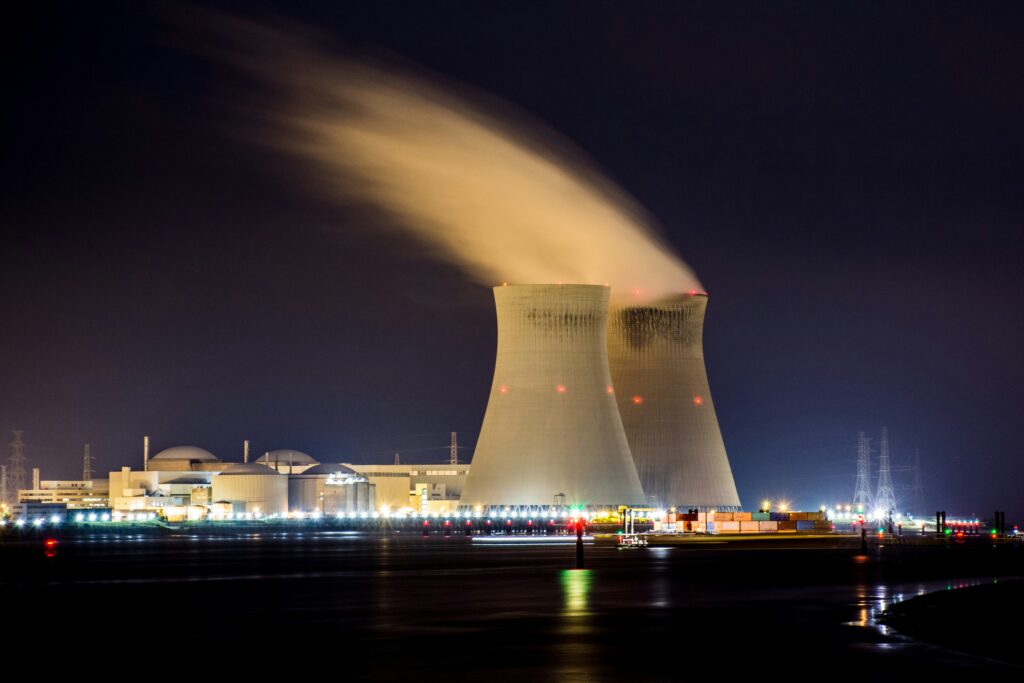Czechia aims to produce up to 60 percent of its electricity from nuclear power by 2050. The eight massive cooling towers at the Dukovany plant dominate the landscape as crews prepare the ground for two new reactors. Mobile drilling teams extract samples 140 meters underground to confirm the site’s suitability for a $19 billion expansion designed to at least double current nuclear output and strengthen Czechia’s position among Europe’s most nuclear-reliant nations.
South Korea’s KHNP won the tender over France’s EDF and will build two reactors exceeding 1,000 megawatts each. These reactors will operate in the late 2030s and support Dukovany’s four older 512-MW units from the 1980s. The KHNP agreement grants Czechia the option to add two more reactors at the Temelín plant, which already runs two 1,000-MW units. Officials plan to follow these developments with small modular reactors.
Petr Závodský, chief executive of the Dukovany project, said nuclear energy will generate 50 to 60 percent of the country’s electricity around 2050. He said the expansion will help Czechia move away from fossil fuels, secure dependable power at sustainable prices, meet emissions goals, and satisfy the rising demand created by data centers and electric vehicles.
Europe Reconsiders Nuclear as Energy Demands Surge
Czechia expands its nuclear sector while global energy needs climb and nations face strict deadlines to cut carbon emissions. Nuclear power produces waste but avoids greenhouse gases like carbon dioxide, a major driver of climate change.
The European Union included nuclear energy in its framework for sustainable economic activities, enabling easier financing. This decision supports nuclear-heavy countries such as Czechia, Slovakia, Hungary, and France. Belgium and Sweden reversed earlier plans to phase out nuclear energy. Denmark and Italy now reassess their options, while Poland prepares to join Europe’s pro-nuclear group after signing an agreement with Westinghouse to build three units.
Nuclear power provided 24 percent of the EU’s electricity in 2024. Britain deepened cooperation with the United States and announced a £14.2 billion investment in the Sizewell C plant, the first built in the UK since 1995. Czech energy company CEZ, which is 70 percent state-owned, entered a strategic partnership with Rolls-Royce SMR to develop small modular reactors.
Financing, Politics, and Opposition Shape the Nuclear Debate
The Dukovany expansion will cost over €16 billion. The government will acquire an 80 percent stake in the new plant and secure loans that CEZ will repay over 30 years. The state will guarantee stable revenue from electricity for 40 years. EU approval is expected, as the bloc targets climate neutrality by 2050.
Závodský said Czechia cannot meet its goals without new reactors. Nuclear currently supplies 40 percent of the country’s electricity, while coal provides another 40 percent. Officials plan to eliminate coal by 2033.
Financing challenges previously halted progress. CEZ cancelled a 2014 Temelín tender when the government refused guarantees. Security concerns later removed Russia’s Rosatom and China’s CNG from the Dukovany competition after the invasion of Ukraine. CEZ secured fuel supplies from Westinghouse and Framatome, ending dependence on Russia. KHNP will supply fuel for 10 years.
Public support for atomic energy remains strong, yet critics raise concerns. Friends of the Earth argue nuclear projects cost too much and claim investment should focus on modernizing existing energy systems. The country also lacks a permanent storage site for spent fuel.
Dukovany and Temelín sit close to Austria, which abandoned nuclear energy after the 1986 Chernobyl disaster. A dispute over Temelín caused a political crisis in 2000 and shut down border crossings for weeks. Austria remains Europe’s most nuclear-skeptical nation, and its parliament already rejected Czechia’s plan for small modular reactors.


